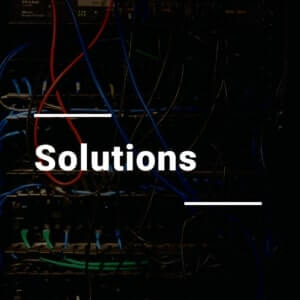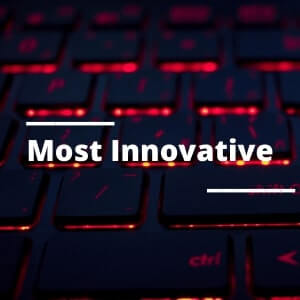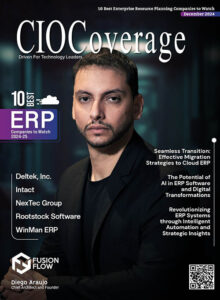 It’s fair to say that patient care depends on healthcare connectivity. Every person who visits a doctor or picks up a prescription generates data that are assembled to form a complete profile of that person. Any break in the data chain and it’s the patient who suffers.
It’s fair to say that patient care depends on healthcare connectivity. Every person who visits a doctor or picks up a prescription generates data that are assembled to form a complete profile of that person. Any break in the data chain and it’s the patient who suffers.
Thankfully, we live in an age of growing connectivity. The secure flow of data throughout a healthcare organization is transforming the patient experience in ways we never imagined—including bridging the gap between home care and inpatient settings. Leading-edge healthcare technology makes it possible for hospitals to achieve a high level of connectivity that improves healthcare operations, promotes positive patient experience, and ultimately drives more successful outcomes.
The goal in pursuing connectivity is a seamless continuum of care. To get there, the healthcare industry must continue to embrace the driving factors behind the data-first movement.
The Ever-Growing, Always Expanding Internet of Things
The biggest driver of connectivity in any industry is the Internet of Things—healthcare included. Virtually every device in healthcare facilities is becoming connected, from blood pressure monitors to scales and beyond, to form the Internet of Medical Things (IoMT). The web of connected devices spans across not just individual facilities, but entire hospital networks and outward, into patient homes and medical supply chains.
Telehealth and Smartphone-Based Care
Due to the coronavirus pandemic, we’ve been thrust into the age of telehealth— that’s not necessarily a bad thing. In fact, it presents powerful opportunities for further connecting patients with their healthcare data.
App-based virtual visits are quick and seamless for patients and physicians—especially considering contactless appointment-setting and sign-in. Hosted through a smartphone, tablet, or laptop, physicians can take notes, enter patient information, update charts in real-time, and even share information with patients directly to discuss. Every telehealth visit is an opportunity to ensure the patient’s data is current and accurate, fed into the digital continuum of care so it can follow patients along their healthcare journey without the need to repeat questions, assessments, or procedures. Patients even get updates and information via apps, contributing to a seamless patient experience.
Opportunities for healthcare mobility are made even greater by advancement in mobile technologies. Smartwatches and phones now feature medical measurement capabilities like blood oxygen sensors, thermometers, and even electrocardiograms.
These features, combined with the high-resolution cameras standard on most smartphones, expand the assessment capabilities of any physician during a telehealth visit. And this is just the beginning. As more consumer-ready, medical-grade devices hit the market, telehealth will only grow more robust, capable of replacing even more types of in-person visits.
The Immediacy and Bandwidth of 5G
The current capabilities of the IoMT and telehealth are already amazing, and they’re about to get even better. 5G is here, with infrastructure growing by the day. That means more bandwidth, faster data transfer, and less latency.
5G data transmission is a foundational technology for connected healthcare. It’s the medium for transmitting data to and from IoMT devices, facilitating rapid transfer of high-resolution scans, and providing high-quality video conferencing capabilities for remote visits. 5G is the key to unlocking the full power of a connected future and healthcare connectivity.
Overcoming Obstacles to Achieve Connectivity and Mobility
The advantages to pursuing healthcare mobility are clear. It’s not as easy, however, as flipping a switch. Organization-wide — industry-wide, even — change can be challenging. I asked digital health expert John Nosta what he saw as the key obstacles that healthcare institutions need to confront on the way to true mobility.
“There are two principle obstacles to driving connectivity. One is human and the other is technology itself,” he says. “The human side of the equation is inertia and the associated complacency that may slow adoption. Sadly, the fax and photocopy are still commonplace and stand in dramatic contrast to technology that is ready, willing, and able to address these issues today.”
The solution, according to Nosta, is to make evolution a cultural imperative: “Today, we see fundamental shifts in data and technology that force change from the comfort of evolution to the discomfort of revolution. Culture crushes innovation–and this is something that must be addressed from the inside out.”
Finally, Nosta suggests that technology in and of itself can be seen as impeding care, not improving it, if the tech isn’t accompanied by changes to processes as well. “Technology can establish barriers that impede adoption too. From costs to integration with workflow, early innovations have failed to gain the support of the busy healthcare provider and administrator,” he says. “The result is that technology, in many instances, is seen as an obstacle to quality care. My sense is that it’s essential that all stakeholders—from patients to physicians—actively seek out and experience the vast innovations that are available today.”
Nosta is confident these obstacles can be overcome with enthusiastic participation from providers and patients. “The role of connectivity and mobility is a shared journey where all participants can benefit in optimizing care,” he says.
A Data-First Mindset Leads to Patient-First Outcomes
Healthcare has always been a data-driven field—it takes data to diagnose, treat and cure patients. Today, healthcare isn’t just driven by data, it’s steeped in it.
The IoMT, healthcare mobility and 5G are the pillars of a data-first approach to administering healthcare. Continued investment in these technologies will create continued connectivity across virtually every segment of patient care. It all adds up to a continuum of measurably better outcomes.
















